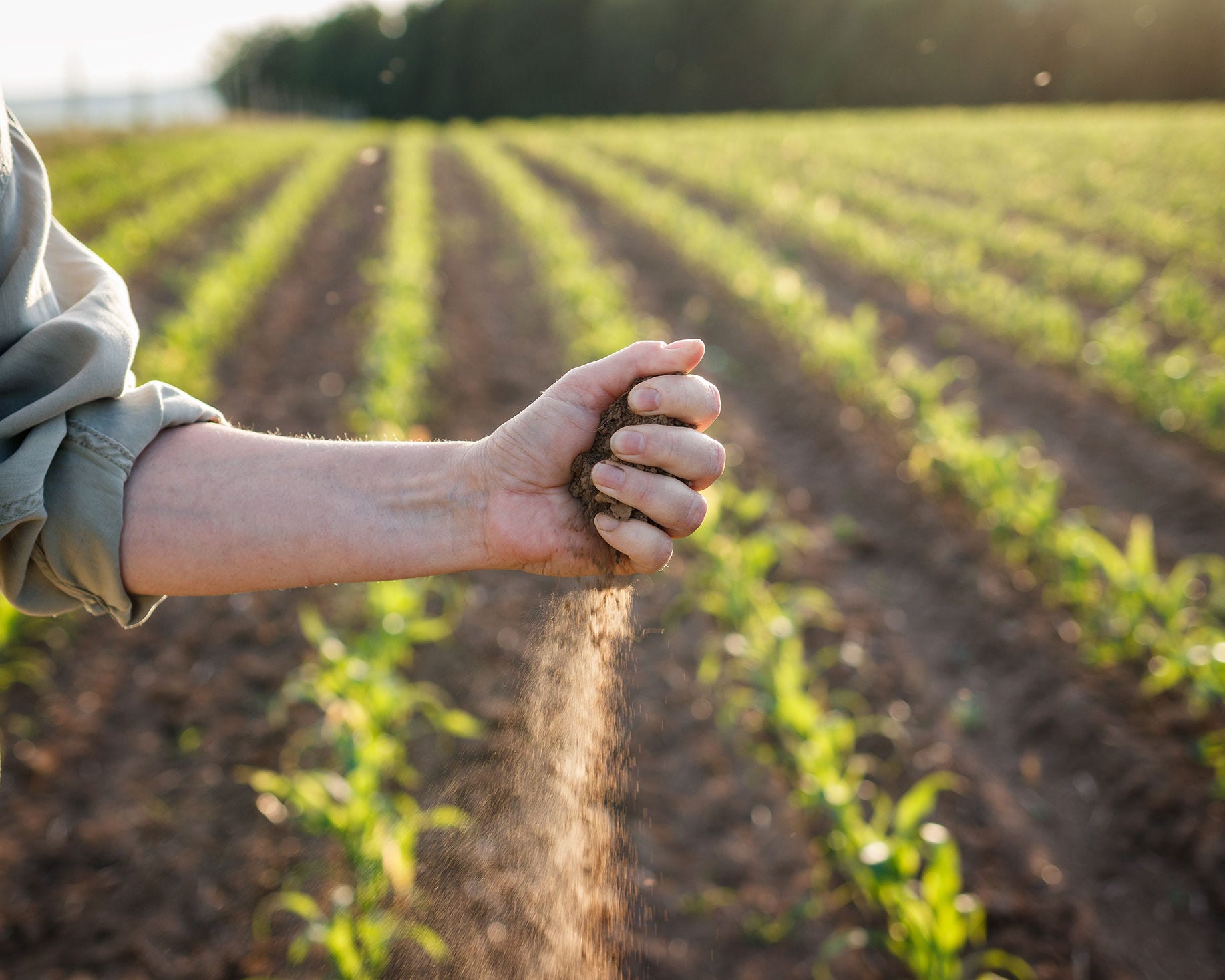Over the past decade, global temperatures have been on average 1.1°C higher than preindustrial levels and continue to rise. The effects of these changes have noticeable impacts on yield and the quality of agricultural products. Risks from extreme events damaging production have also increased: the frequency of droughts has doubled and that of storms has tripled, and the prevalence of floods has been six times higher in the last decade than fifty years ago. The sector, however, remains a driver of these changes, as it globally contributes 11% of anthropogenic emissions through direct on farm emissions, and food systems as a whole account for about a third of total emissions, along side land use change and downstream food chains.
Climate change, agriculture and food systems
Agriculture and food systems are uniquely vulnerable to climate change, with direct effects from temperature and precipitation changes, and must urgently adapt to these new conditions. At the same time, agriculture and food systems are an important source of global greenhouse gas (GHG) emissions. Policies can help the sector be part of the solution by reducing on-farm and supply chain emissions, limiting deforestation, and enhancing carbon sequestration in biomass and soils.

Key messages
Policy interventions have a significant effect on the agricultural sector, influencing how producers make decisions and what the future of food and farming will look like. However, current agricultural support policies generate adverse incentives that can hinder climate actions. Producers receive USD 630 billion annually in individual support and two-thirds of this amount comes from the most market distorting forms of support. Such policies can hamper farmers’ capacity to adapt, for instance by discouraging alternative production when support is tied to specific commodities. They can also undermine climate mitigation efforts by encouraging the production of high emission-intensity products. Only a small fraction of total support (12.5%) goes to investments in general services for the sector, with less than a quarter of this percentage supporting knowledge and innovation directly.
Over the last 30 years, OECD countries have increasingly emphasised agricultural climate change adaptation and the importance of adaptation-mitigation synergies in their climate strategies. They have identified many required measures, but most of these are still in the planning stage. It has become imperative that governments put these measures into practice, and that they track their progress and assess their outcomes. It is equally important that programmes, which often focus on supporting resilience in the short and medium term, work on the basis of long-term resilience, i.e. the potential for the sector to support transformational adaptation when existing systems become untenable.
There is significant potential for the agricultural sector to contribute to climate change mitigation efforts. Farmers can reduce on-farm emissions by using inputs more efficiently, deploying new technologies, and improving farm management. They can also lower indirect emissions from land-use change by protecting forest and natural land with high-carbon stock, and by restoring ecosystems and reforesting land to sequester carbon. Yet, agriculture continues to be largely excluded from emission reduction commitments and actions. The sector is generally exempt from mitigation schemes such as carbon pricing or equivalent regulatory measures, and only a few countries use targeted subsidies to incentivise mitigation.
Context
Agriculture GHG emissions remain steady in OECD countries, but was partly decoupled from production over the recent decades
Between 1990 and 2019, direct agricultural GHG emissions grew slightly in OECD countries, from about 1.46 to 1.53 GtCO2-eq, which represents an increase of 0.2% per year. Over the same period, agricultural production increased five times faster, at 1% per year, which shows significant decoupling between production in GHG emissions. Two-thirds of the growth in emissions was driven by crop cultivation and soils emission increases, and one-third by direct livestock emissions – with a slight reduction of enteric fermentation methane from cattle offset by the increase in manure management emissions as pig and poultry farming expanded. These emissions represent a quarter of global direct agricultural emissions for a similar share of the global value of production.
Climate mitigation commitments are often missing for the agricultural sector
By mid-2023, only 19 countries of the 54 monitored in the OECD Agricultural Policy Monitoring and Evaluation report had set emission reduction targets specific to the agricultural sector, and they are not always legally binding. Although sector-specific targets can be helpful to focus mitigation efforts and to measure progress, they would not be necessary if economy-wide emissions reduction schemes covered agriculture. This sector is generally exempt, however, from mitigation policies such as carbon pricing or equivalent regulatory measures, and only a few countries use targeted subsidies to incentivise mitigation.
Current agricultural adaptation-related action focus on planning and absorptive capacity, and not enough on transformations
The OECD Agricultural Policy Monitoring and Evaluation 2023 identified nearly 600 adaptation measures adopted in 54 countries, with 446 of these measures in OECD countries. The majority of efforts to support adaptation comprise social, economic and institutional measures; these include developing strategic planning documents, governance changes, providing climate information, and creating or extending insurance mechanisms to cover catastrophic climate risk (61%). Nineteen percent (19%) of such measures are ecosystem-based approaches which seek to enhance, protect or promote ecosystem services, e.g. by advancing agro-ecosystems or targeting water quality improvements. Infrastructure and technical measures are also targeted, e.g. via investments in irrigation or drainage, as are changes in farmer behaviour, e.g. through crop and livestock breeding programmes.
Although a broad range of adaptation measures have been developed, more attention should be given to implementation, monitoring and evaluation. A significant proportion of adaptation-related activities presently focus on developing strategic planning documents (21%), and not enough on their implementation.
Related publications
-
 Policy paper22 November 2024
Policy paper22 November 2024